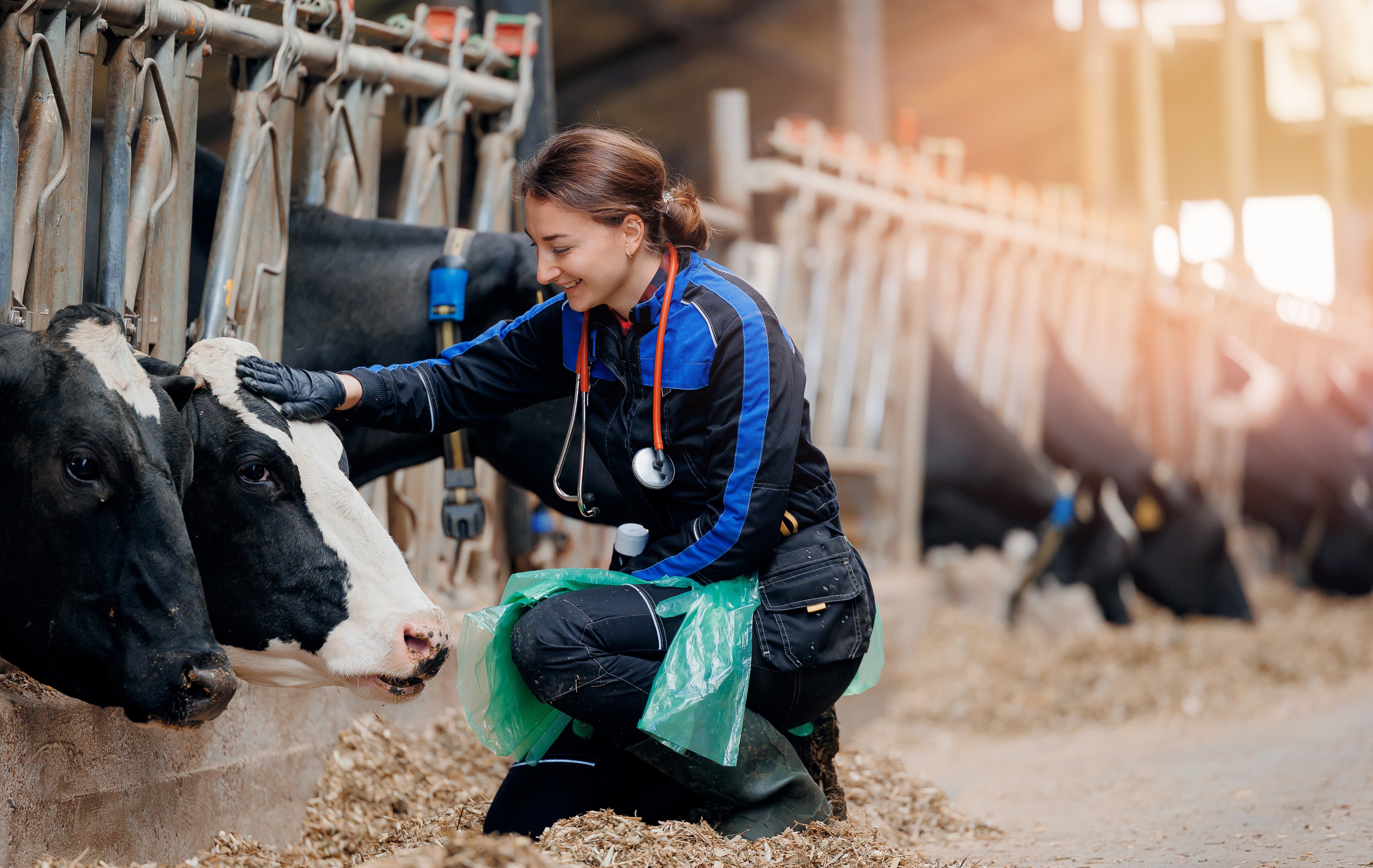
The right glove for the right task
Consult the practical guide to discover the properties and performance of synthetic gloves for optimal protection.
Protect yourself with the right gloves!
![]() Published on July 30, 2024
Published on July 30, 2024
Powered by


Selecting Glove Material for the Task at Hand
Modern synthetic glove material composition mimics the properties of natural rubber latex, for decades defined by end-users as the gold standard.1,2 The successful synthesis of polyisoprene, polychloroprene, nitrile and different copolymers and/or blends of the forementioned materials provokes confusion for end-users. The purpose of this article is to improve understanding of the synthetic category of medical gloves in Canada.
Currently rubber synthetic gloves also referred as” non-latex or synthetic gloves.” Industrial, general purpose and disposable medical gloves sold in a variety of industries for applications that requires hand protection against chemical, mechanical, heat, water, blood, and bodily fluids susceptible in transmitting pathogens.3
In veterinarian practice all these risks apply requiring the need for better understanding of the right glove for the task.
Gloves Defined as Class II Medical Devices4
Health Canada licenses all disposable medical examination gloves imported and sold in Canada. Here is what you need to know:
The Food and Drugs Act and the Medical Devices Regulation (Health Canada) help to protect the health and safety of Canadians. Licensing medical devices falls under two types of licenses. The first license is the “Medical device establishment licensing” (MDEL) regulation which provides the right to import, distribute/or manufacture class I to Class IV medical devices sold in Canada.
The second license issued is the “Medical device license” (MDL) which classifies medical devices in four classes, from the lowest potential (II) to the highest (4). MDL are issued for Class II medical devices and above through specific quality management systems and need to meet the requirements for safety and effectiveness.
Standards of quality under medical devices regulations in Canada comply with accepted quality level (AQL) under American Standard Testing Material (ASTM) D3577 for surgical gloves at 1.5 and ASTM D3578 for medical examination gloves at 2.5.6 There are other international recognized methodology tests for glove material and AQL around the world. These defined methodologies all have different threshold requirements. Manufacturers selling and distributing gloves in a specific region are bound to comply with regional specific legislation.
For clarity, Health Canada provides a list of medical devices licensed on their website. You will find all Medical active devices licenses at: Medical device active licensing listing (MDALL) https://health-products.canada.ca/mdall-limh/
Definition of class II medical gloves
Medical gloves play a role of protecting the end-user against environmental microorganisms that can be potentially harmful to humans and/or animals. They provide a safety barrier against contamination during examinations or medical procedures.7
These gloves are either made of latex, vinyl, polyurethane, or synthetic rubber. Manufacturers make synthetic rubber gloves of varied materials such as nitrile, neoprene, polyisoprene, and/or blends of the forementioned material. They are either sterile and packed by units or pairs or non-sterile packaged in a box of a variety of format i.e., 50 to 300 units per box. Furthermore, ASTM test glove properties by type of material; hence polyvinyl gloves qualify with lower elongation and tear resistance requirements compared to rubber synthetic or natural rubber latex.
All medical glove sizes need to conform to a minimal length, and width with a required conformity level of 4.0.6 Therefore, any changes in glove manufacturers in healthcare institutions may not require a major change in glove stock keeping units but may need adjustments to different individual hand conformity.
Health Canada policy regulates Class II medical devices labelling requirements. Manufacturers must clearly write on the packaging the intended use of a device, what it contains, sizes and country of origin.6
A variety of disposable gloves sold in Canada as consumer goods are not regulated under medical disposable gloves. In this instance, you will notice in the labeling “for general purpose”,” for industrial use” or “not a medical device.” Health Canada recommends not to label products implying their use for medical purposes.4
Manufacturers offer a guardian glove reference system for different chemical applications in industries based on working conditions where the occupational risk is real.7,8
Medical examination gloves intended for patient care activities may not meet other industrial applications. It is misleading to believe that gloves rated as medical devices offer superior resistance in contact with chemicals, or have superior mechanical strength, and used in applications outside the medical field. It is important to use the right gloves for the task at hand. If in doubt, call the manufacturer servicing your institution to assist in properly fitting your needs for the tasks required.
What About the Materials
|
Natural Rubber Latex (NRL) - commonly referred to as “latex” gloves. Manufacturers produce natural rubber latex gloves from an aqueous, milky white colored sap originating from the Hevea Brasiliensis tree found in Southeast Asia and South America. The cross-linked molecular structure of the natural rubber latex gives it, extraordinary strength, elasticity, and the ability to stretch. Natural rubber proteins contained in natural rubber latex are responsible for latex sensitization known as Type I Immediate Hypersensitivity Reaction. Furthermore, chemical compounds used during manufacturing of the gloves have the potential for sensitizing individuals to Type IV Chemical Allergies also known as Type IV Delayed Hypersensitivity Reactions.9 Polyvinyl Chloride (PVC) - commonly known as vinyl. This material is a petroleum-based film, molded with plasticizers such as phthalates and not molecularly crosslinked. Because it lacks crosslinking, the individual molecules of vinyl tend to separate when stretched or flexed. Vinyl contains no natural latex proteins; however, it does, contain a variety of potentially allergenic catalyst residues.10 Vinyl exhibits exceptionally low tensile strength, low elasticity, and poor puncture and tear resistance,11 the reason for its lower property regulatory requirements. Synthetic Rubber 7,12 Nitrile - is a petroleum based cross-linked film manufactured like natural rubber latex. Nitrile exhibits more stringent fit. Nitrile is known for its higher chemical and puncture resistance properties than natural rubber latex. It may or may not contain compounds that provoke skin dermatitis known as Type IV Chemical Allergy or Type IV Delayed Reaction11. |
Neoprene - a petroleum-based crosslinked film with attractive physical properties of strength, and durability. Neoprene also exhibits good resistance to chemical solvents. Neoprene maintains a modulus higher than latex which provides more pressure on the hand when wearing gloves for extended period. It may or may not contain compounds that provoke skin dermatitis known as Type IV Chemical Allergy or Type IV Delayed Reaction.11 Polyisoprene - is a petroleum-based film closely resembling the fit and feel of latex. It contains no latex protein. It may or may not contain compounds that provoke skin dermatitis known as Type IV Chemical Allergy or Type IV Delayed Reaction.11 Blends7 Copolymer blends found in Surgical gloves, responding to both latex and chemical allergy. This blend has no resistance to bone cement. Nitrile and latex blends; manufactured in the industrial and chemical market as chemical, and mechanical resistant gloves. Nitrile and vinyl blends mostly manufactured for the industrial market as chemical-resistant gloves. Neoprene and polyisoprene blends found in Surgical gloves this blend combines the resistance of neoprene and the comfort of polyisoprene. Nitrile and neoprene blends found in examination gloves for laboratories and emergency services as it confers to higher chemical resistance and puncture resistance. Polyurethane; made from a variety of copolymer composition found in different mechanical, chemical industries |
Conclusion
Gloves manufacturers patent the formers, the processes and composition of natural latex rubber content, and synthetic rubber and innovative rubber blends. Each manufacturer confers their own recipe and distinct shape for gloves. The glove properties and performance will vary, making the choices complicated. Since Health Canada provides guidelines and basic requirements for gloves, all gloves look the same, and we often extrapolate their values in making a general statement on specific material resistance. This thinking may harm you. Gloves will perform differently and are dependent on their composition, thickness, and manufacturing processes. The best way to identify if gloves meet your requirements is to ask the manufacturer for the gloves that best fit the required task. Upon request, most manufacturers will provide you with a choice of products with:
-
A recommendation for blood and bodily fluids, chemical, puncture, cut or heat resistance
-
Reviewing your process recommending the best available choice of barrier.
-
In view of chemical mixture standard procedures which involves more than one glove, chemists will be able to provide insight on available choices.
-
If you have a known allergy- manufacturers will suggest a product without the identified allergen.
Do not choose a glove for the best price thinking that they are all the same. Choose a manufacturer that you trust that can provide a rational recommendation for the task required and align to a glove that will protect your hands.
Combine security, comfort, and performance
Discover premium quality gloves and take advantage of the summer offer!
You must be logged in to access the page.
REFERENCES
- Hübner NO, Goerdt AM, Mannerow A, et al. The durability of examination gloves used on intensive care units. BMC Infect Dis 2013; 13: 226.
- Korniewicz DM, El Masri MM, Broyles JM, Martin CD, O’Connel KP., A laboratory-based study to assess the performance of surgical glove, AORN journal. 2003;77(4);772-779
- Verbeek JH, Rajamaki B, Ijaz S, et al. Personal protective equipment for preventing highly infectious diseases due to exposure to contaminated body fluids in healthcare staff. Cochrane Database of Systematic Reviews 2019; 7.
- How medical devices are licensed and regulated, Health Canada website, https://www.canada.ca/en/health-canada/services/drugs-health-products/medical-devices/about-medical-devices.html#s2 Accessed September 18, 2023
- American Standard and Testing Material (ASTM). ASTM D3577 Standard specification for rubber surgical gloves, ASTM international, USA, Published 2019
- American Standard and Testing Material (ASTM). ASTM D3578’Designation: D3578 – 19 Standard Specification for Rubber Examination Gloves, ASTM international, USA, Published 2019
- Occupational Safety and Health Administration, Personal Protective equipment, OSHA 3151-02R 2023, https// www. Osha.gov/ sites/default/files/publications/osha/3151.pdf, 2023, Accessed September,18,2023
- Guardian/Guardian Chemicals. Ansell Limited, LLC. www.ansell.com / Ansellguardian chemicals
- Geier J, Lessman H, Malher V, Pohrt U., Uter W., Schnuch A., Occupational contact allergy caused by rubber gloves- nothing has changed. Contact Dermatitis. 2012, 67; 149-156
- Crepy MN, Langlois E., Melin S., et al., Tricresyl phosphate in polyvinylchloride gloves: a new allergen, Contact Dermatitis, 2014;70:316-318
- Murphy C, Why quality gloves matter, AnsellCAres InTouch Clinical update, Issue # 4, 2016, https//Ansell.com/AnsellCares/ Accessed September 18,2023
- Verbeek JH, Rajamaki B, Ijaz S, et al., Personal protective equipment for preventing highly infectious diseases due to exposure to contaminated body fluids in healthcare staff, Cochrane Database of systemic reviews, 2019, 12


